
The Ultimate How-To on Caring for Red Rimmed Melania Snails
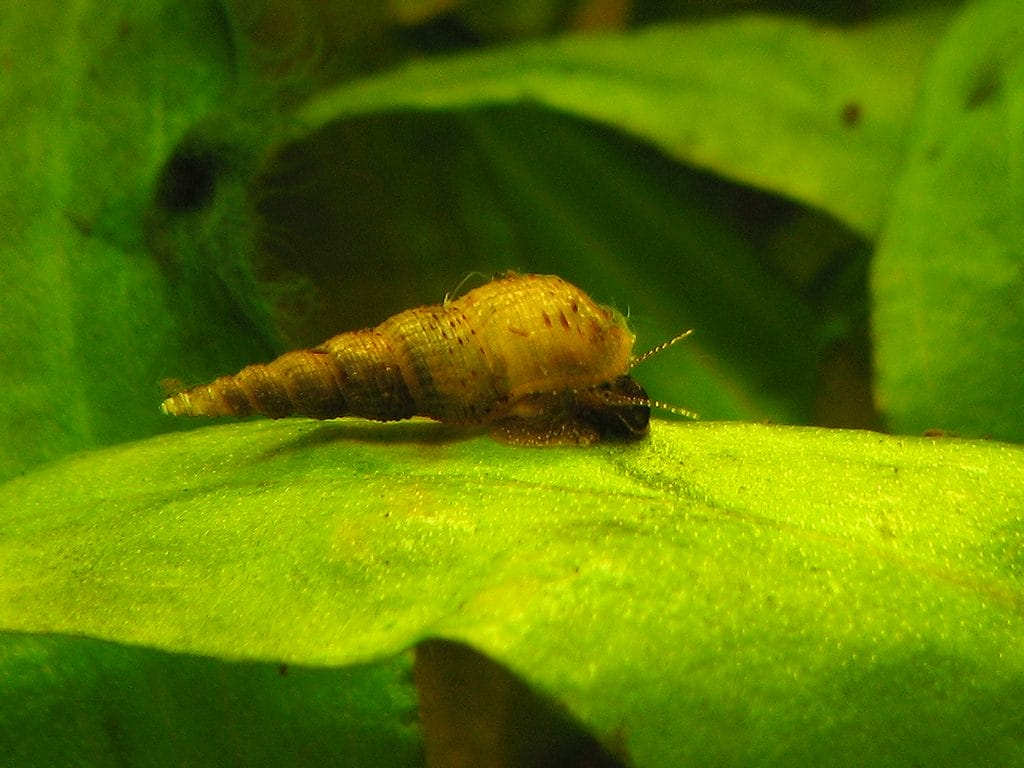
Melanoides tuberculata, also known as the Red Rimmed Melania Snail, is becoming very popular in the aquarium trade in the United States. People appreciate these snails because they are great at eating algae and keeping the substrate clean.
However, they can be hard to manage because they breed so quickly. This guide will help you learn how to care for these amazing snails the right way. It will also discuss their effect on the environment.
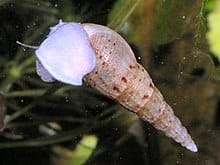
Read More : 18 Types of Freshwater Aquarium Snails You Should Have
Understanding Red Rimmed Melania Snails
Red Rimmed Melania Snails, or Melanoides tuberculata, are interesting freshwater snails. Their common name comes from the red-brown spots on their shells. Aquarists like them because they eat algae. However, they can reproduce quickly, which may cause too many snails in the tank.
These snails come from Southern Asia and Northern Africa, but they are now found in many places. This spread is mainly due to the aquarium trade. Their strength and ability to adapt make them popular in home aquariums.
Characteristics and Appearance
One of the unique traits of the Red Rimmed Melania Snail is its conical shell. This cone-shaped shell usually comes in colors that range from light brown to dark brown. It protects the soft body of the snail inside. Each shell has reddish-brown blotches and stripes. These patterns make the shell more appealing to people who love aquariums.
The color of the shell can change based on where the snail lives and what it eats. Generally, snails that live in areas with a lot of iron may have darker, nearly black shells.
The operculum is a small, hard plate that works like a trapdoor. It seals the snail’s shell when it goes inside for safety or when it is inactive. This operculum is an important feature for many aquatic snails and helps them survive in different places.
Natural Habitat and Distribution in the United States
The Red Rimmed Melania Snail is a type of freshwater snail. It lives in different water environments like rivers, lakes, and ponds. These snails are found from Southern Asia to Northern Africa. They play an important role in their local ecosystem. However, when they are introduced to new regions, like the United States, it raises some worries.
In the US, the aquarium trade helped these snails enter by accident. Since they got here in the 1930s, they have spread to many areas across the country. This includes Southern states such as Texas and Florida.
People are worried about how these snails might affect native snail populations. They might compete for resources and could spread parasites. Researchers are looking into these issues.
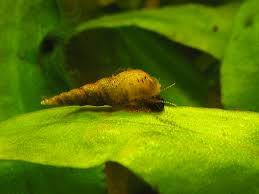
Getting Started with Red Rimmed Melania Snails
Adding Red Rimmed Melania snails to your freshwater aquarium can be a great experience. They act in interesting ways and eat algae, which makes them helpful. But, taking care of an aquarium the right way means creating a safe environment for them to stay healthy.
It’s important to know what they need. This includes a suitable tank size, good tank mates, and the right food. These things help mimic their natural home. When you choose wisely, you can create a healthy space for your snails and improve the whole aquarium ecosystem.
Essential Equipment and Resources
Setting up an aquarium for Red Rimmed Melania Snails takes a bit of thought about how these snails live naturally. These snails can adapt well, but they need the right environment to really thrive. One important thing is to choose the right substrate.
A sandy substrate is the best choice. It lets the snails burrow and act like they would in the wild. It also gives them plenty of surfaces to eat algae and detritus. The aquarium should be big enough for a healthy number of snails without overcrowding them.
It’s important to have enough resources like food and hiding spots. Adding plants, rocks, and driftwood will act like their natural home. This also helps with algae growth, which is a major food source for them. A well-planned aquarium will help both the snails and make your aquatic space look great.
Selecting Your First Red Rimmed Melania Snails
The Red Rimmed Melania Snail is in the family Thiaridae, which is a tough group that does well in the aquarium trade. They are sometimes called exotic aquatic snails, but you can find them in most aquarium stores. When picking your first snails, look at them closely to check for good health.
Choose snails that have smooth, unbroken shells. Their bodies should look healthy, plump, and active. Stay away from snails that seem slow or have shells that are cracked or chipped. These might show they have health issues.
It’s also a good idea to keep new snails in quarantine before adding them to your main aquarium. This can help stop any possible spread of diseases or parasites that could harm the other fish and creatures in your tank.
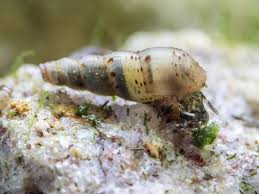
Step-by-Step Guide to Caring for Red Rimmed Melania Snails
Caring for Red Rimmed Melania Snails is simple if you create a good home for them. These snails are strong and can handle different water conditions. However, keeping the water clean and giving them the right food is very important for their health.
To care for them, regularly clean the tank and change some of the water. This helps avoid waste buildup that can hurt the snails or other fish in the aquarium. Always keep in mind that a healthy environment is vital for your aquatic snails.
Step 1: Setting Up the Tank
Before you add Red Rimmed Melania Snails to your aquarium, it’s important to set up the tank correctly. This helps provide good conditions and keeps the water quality high. First, choose a tank that is the right size. Remember, these snails breed fast, and too many can lead to water quality problems.
Use a sandy substrate that lets them burrow. This mimics their natural behavior and helps good bacteria grow, leading to a healthy ecosystem. You should also add plants, rocks, and driftwood. These create hiding spots and help promote algae growth, which is an important part of their diet.
It’s vital to cycle your aquarium before adding any snails. This means creating colonies of beneficial bacteria that clear away harmful ammonia and nitrites. Once your aquarium cycles and the water is stable, you can safely add your Red Rimmed Melania Snails.
Step 2: Maintaining Water Quality and Temperature
Water quality and temperature are very important for taking care of Melanoides tuberculatus, also known as Red Rimmed Melania Snails. These snails can live in different water settings, but they do best in certain conditions. The best temperature for them is between 72 and 82 degrees Fahrenheit.
You should regularly check water levels like pH, ammonia, nitrite, and nitrate. Keeping the pH stable between 7.0 and 8.0 is best for their health. High levels of ammonia, nitrite, or nitrate can be harmful. These are waste products from fish and rotting plants.
It is also very important to change a part of the water every one to two weeks. Siphoning the substrate helps take away extra debris and leftover food. This prevents dangerous toxins from building up. Get a good water testing kit to keep an eye on the water and create a healthy home for your snails.
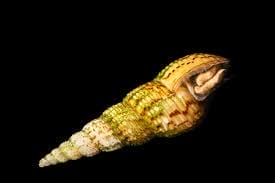
Ecology
The Red-rimmed Melania Snail (Melanoides tuberculata) has some interesting facts about its ecology. When we look at where they live and how they feed, we can understand better how they fit into different ecosystems. They can live in many types of places, which shows how flexible they are.
But this strength, along with their way of having babies, means they could become an invasive species if they are taken from their home areas. They can hurt local ecosystems. This shows why it is important to care for aquariums properly and not release them into nature.
Habitat
Red-rimmed Melania Snails come from Southern Asia. They have spread to many places around the world. These snails like freshwater areas with calm or still water that has lots of organic material. Biscayne National Park, with its many canals and waterways, is a great place for them to thrive.
You can find these snails a lot in muddy or sandy areas. They burrow into the substrate and hide during the day. They can live in different water conditions, even where there is less oxygen. This helps them survive in places where many other snail types cannot live.
But having these snails in delicate areas, like wildlife parks and national refuges, is a worry. They may outcompete native species for food and space. This could disrupt the fragile balance of the environment.
Feeding habits
Red-rimmed Melania snails are known as detritivores. They mainly eat decaying plant matter, biofilm, and detritus found on the substrate. Their feeding habits make them great for aquariums because they help keep the environment clean and healthy.
These snails eat algae that form on surfaces. This helps control algae growth and stops messy algae blooms. They also eat leftover fish food and dead or decaying snails. This behavior helps maintain a balanced ecosystem.
Melania snails are good at breaking down detritus and other organic waste. This process releases nutrients back into the water, which supports the overall health of the aquarium. Their natural cleaning abilities make them very important, especially in closed environments like aquariums.
Life cycle
Red-rimmed Melania Snails exhibit a unique life cycle characterized by parthenogenesis. This process enables females to reproduce without mating, producing clones of themselves. They are ovoviviparous, meaning fertilized eggs develop and hatch within the mother’s brood pouch.
Once the embryos develop within the brood pouch, miniature snails emerge, ready to begin their life cycle. This efficient reproductive strategy contributes to their rapid population growth, particularly in environments with abundant resources and favorable conditions.
| Stage | Description |
| Egg | Fertilized eggs are retained and develop within the female’s brood pouch. |
| Juvenile | Miniature snails emerge from the brood pouch and begin feeding and growing. |
| Adult | Adult snails typically reach sexual maturity within a few months and can live for several years. |
Parasites
Red-rimmed Melania snails can carry different parasites. This includes trematodes, which can be dangerous for other fish in the aquarium and, sometimes, for humans. While infections are not common, it is important for aquarium owners to be aware and take steps to prevent problems.
Trematodes are flatworms that use snails to grow during part of their life cycle. Fish and even humans can get sick from eating infected snails or being near water with trematode larvae.
To lower the chance of spreading parasites, keep new snails in a separate place first. Also, do not overcrowd the aquarium. It is important to check your snails regularly for any changes in their behavior or looks. This helps keep your aquarium safe and healthy.
Taxonomy
The Red-rimmed Melania snail is called Melanoides tuberculata. It is part of the family Thiaridae, which has many types of freshwater snails. These snails have conical shells and a small plate called the operculum. This plate works like a trapdoor.
The name Melanoides shows that the snail has dark coloring. The name ‘tuberculata’ comes from the tiny bumps on its shell. Even though people first described this snail in the 18th century, scientists are still studying its classification and how it has spread around the world.
Learning about how they are classified is important. It helps us understand their history, how they relate to other snails, and what effect they may have on the environment, especially in places where they are new.
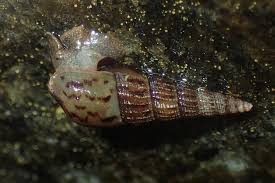
Conclusion
In conclusion, taking care of Red Rimmed Melania Snails needs attention and good upkeep of their homes. It’s important to know their special traits, where they live in nature, and what they eat to keep them healthy.
By following a clear guide and having the right tools, you can set up a good space for these interesting snails. Always remember to check the water quality, and keep the right temperature and feeding routine to help them grow well in captivity.
By learning about their life cycle and environment, you can better understand why it’s vital to protect their natural homes. For more answers and insights about Red Rimmed Melania Snails, check the FAQ section.
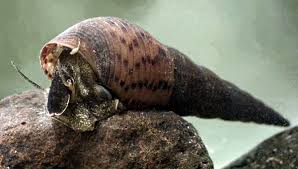
Frequently Asked Questions
What Do Red Rimmed Melania Snails Eat?
Red Rimmed Melania Snails mostly eat algae, detritus, and decaying plant matter. They can also eat leftover fish food pellets. These snails can live peacefully with Nerite snails because they have slightly different diets.





